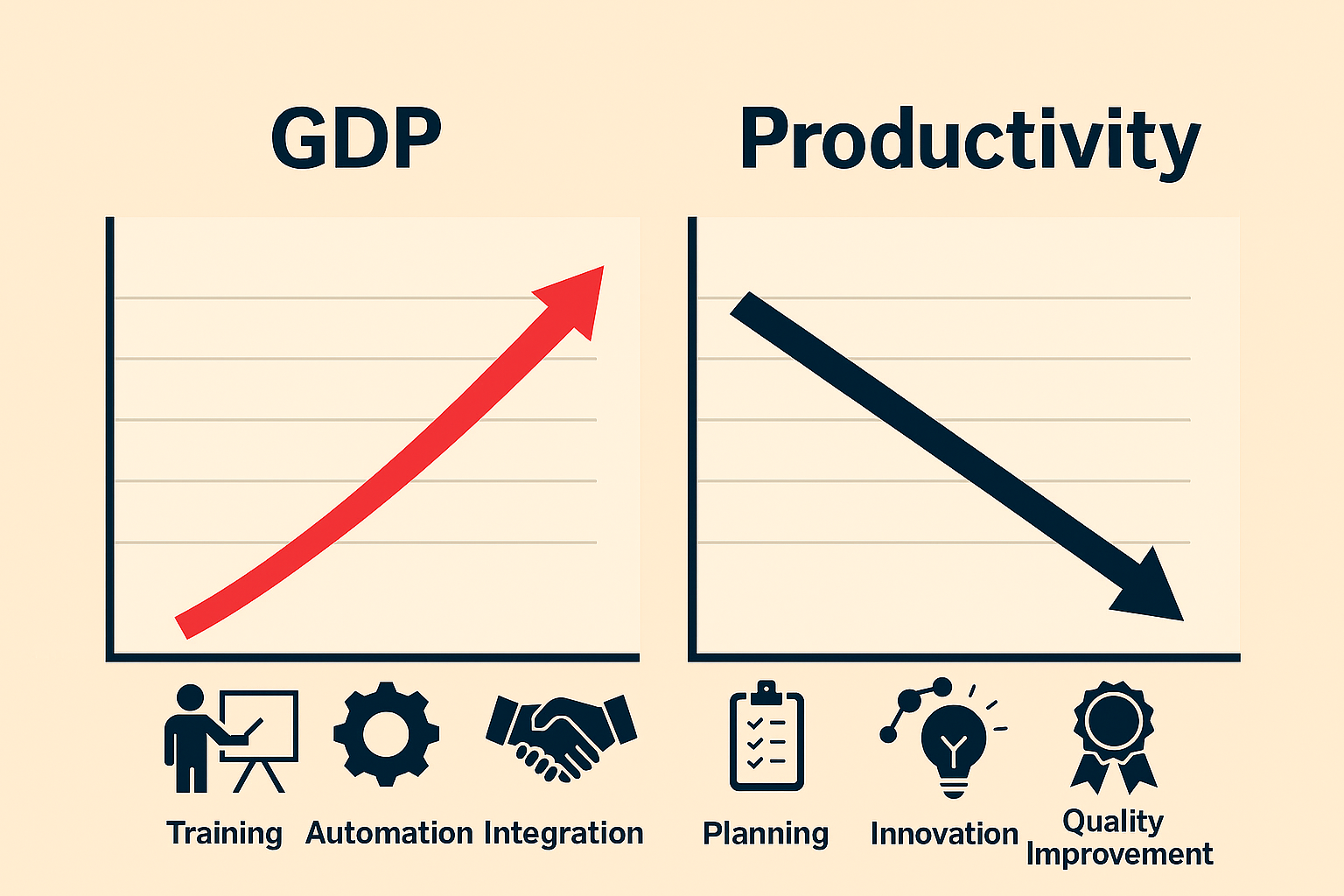Canada’s immigration-driven population growth has fueled total GDP increases, but GDP per capita remains stagnant or declining. This divergence stems from the fact that while more workers expand the economy’s size, productivity gains have not kept pace. According to Statistics Canada (2024) and the Parliamentary Budget Officer (2025), newcomers initially earn less and take time to integrate into high-productivity sectors, creating a lag in per capita output. The Bank of Canada (2025) emphasizes that productivity—not just labor force size—is the key determinant of living standards. The reality is that not enough focus and effort has been on improving productivity by organizations. With there still being an ongoing challenge around skilled labor shortages, tariff and other cost increases, it is even more critical that all businesses, especially the SME (Small, Medium Enterprises) take a long hard look at their productivity.
Why Productivity Matters
- Aggregate GDP growth without productivity improvements does not raise individual prosperity.
- Productivity gains drive higher wages, competitiveness, and sustainable growth.
- Immigration policies alone cannot solve Canada’s economic puzzle without complementary measures to boost efficiency and innovation.
- Productivity gains translate into reduced costs, higher profitability and will drive sales revenue upwards.
Suggestions to Improve Productivity in Organizations
Note, that for each suggestion, you would need to conduct a cost-benefit analysis to determine what would work for your business.
- Invest in Skills Development
- Provide continuous training and upskilling programs for employees.
- Focus on digital literacy, AI adoption, and advanced technical skills.
- Leverage Technology
- Automate repetitive tasks to free up time for higher-value work.
- Implement data analytics and AI tools for smarter decision-making.
- Enhance Workforce Integration
- Create mentorship and onboarding programs for newcomers.
- Align talent with roles that match their skills quickly to reduce underemployment.
- Foster Innovation Culture
- Encourage cross-functional collaboration and idea-sharing.
- Allocate resources for R&D and process improvement initiatives.
- Optimize Processes
- Use lean management techniques to eliminate inefficiencies.
- Regularly review workflows to adapt to changing market conditions.
- Measure and Reward Performance
- Set clear productivity metrics and link them to incentives.
- Recognize and reward contributions that improve efficiency.
So, the question you should be asking yourself is “Are we doing enough in our business to understand our processes and to drive operational productivity and efficiency improvements?”.
What specific challenges are you facing in your supply chain operations? Maybe I can offer some tailored advice!
Let’s Take Your Business Further. Ask me how.
Dr Kenneth Moodley LinkedIn





